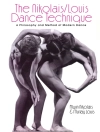Neo-noir knows its past. It knows the rules of the game – and how to break them. From
Point Blank (1998) to
Oldboy (2003), from
Get Carter (2000) to
36 Quai des Orfèvres (2004), from Catherine Tramell to Max Payne, neo-noir is a transnational global phenomenon. This wide-ranging collection maps out the terrain, combining genre, stylistic and textual analysis with Marxist, feminist, psychoanalytic and industrial approaches. Essays discuss works from the US, UK, France, Japan, South Korea, Hong Kong and New Zealand; key figures, such as David Lynch, the Coen Brothers, Quentin Tarantino and Sharon Stone; major conventions, such as the femme fatale, paranoia, anxiety, the city and the threat to the self; and the use of sound and colour.
Содержание
Notes on Contributors
Foreword: ‘If Only My Leg Didn’t Itch’, by Mike Hodges
Parallax Views: An Introduction, by Mark Bould, Kathrina Glitre, and Greg Tuck
1. Under the Neon Rainbow: Colour and Neo-Noir, by Kathrina Glitre
2. Audio-Noir: Audiovisuality in Neo-Modernist Noir, by Robert Miklitsch
3. Paranoia and Nostalgia: Sonic Motifs and Songs in Neo-Noir, by Helen Hanson
4. The End of Work: From Double Indemnity to Body Heat, by Carl Freedman
5. Worlds Without Consequence: Two Versions of Film Noir in the 1980s, by Edward Gallafent
6. From Lonely Streets to Lonely Rooms: Prefiguration, Affective Responses and the Max Payne Single-Player, by Greg Singh
7. The New Lower Depths: Paris in French Neo-Noir Cinema, by Ginette Vincendeau
8. The Shadow of Outlaws in Asian Noir: Hiroshima, Hong Kong and Seoul, by Hyangjin Lee
9. British Neo-Noir and Reification: Croupier and Dirty Pretty Things, by Mike Wayne
10. Laughter in the Dark: Irony, Black Comedy and Noir in the Films of David Lynch, the Coen Brothers and Quentin Tarantino, by Greg Tuck
11. A Woman Scorned: The Neo-Noir Erotic Thriller as Revenge Drama, by Linda Ruth Williams
12. Neo-Noir’s Fatal Woman: Stardom, Survival and Sharon Stone, by Rebecca Feasey
13. Fatality Revisited: The Problem of ‘Anxiety’ in Psychoanalytic-Feminist Approaches to Film Noir, by Suzy Gordon
14. The Thin Men: Anorexic Subjectivity in Fight Club and The Machinist, by Sherryl Vint and Mark Bould
15. Memento: Pasting Ourselves Together Through Cinema, by Deborah Thomas
Filmography
Index
Об авторе
Mark Bould is editor of
Science Fiction Film and Television and author of
Film Noir: From Berlin to Sin City (2005),
The Cinema of John Sayles: Lone Star (2008),
Red Planets: Marxism and Science Fiction (2009), and
The Routledge Companion to Science Fiction (2009). Kathrina Glitre is author of
Hollywood Romantic Comedy: States of the Union, 1934-65 (2006) and
Starring Cary Grant (2010). Greg Tuck editor of
Film-Philosophy and is currently writing
Philosophy, Cinema, and Sex. All three teach film studies at the University of the West of England, Bristol.












